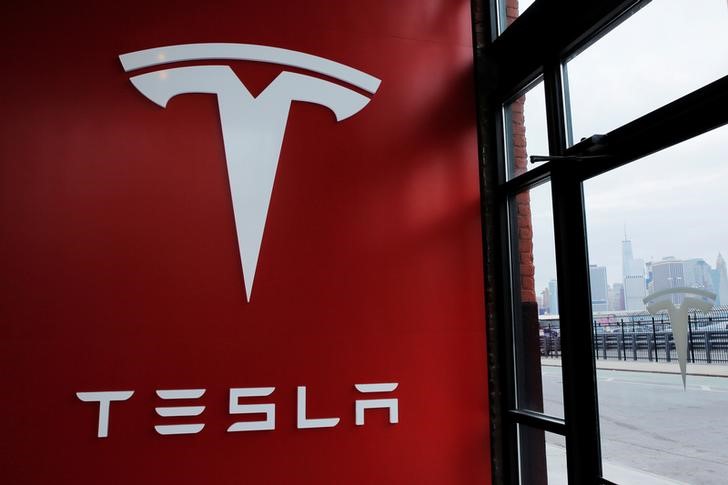* Battery must be switched on in 100 days or it will be free
* 129 MWh battery key for summer peaks from December
* Construction well underway - state energy minister (Recasts with grid connection agreement)
By Sonali Paul
HORNSDALE, Australia, Sept 29 (Reuters) - One year after the state of South Australia suffered a major blackout, the clock has started ticking for Tesla Inc TSLA.O to finish building the world's biggest battery to help keep the lights on in Australia's most wind-dependent state.
Tesla TSLA.O won a bid in July to build a 129 megawatt hour (MWh) battery and the state is counting on it to be ready by the start of the southern summer in December when electricity demand begins to peak. chief executive Elon Musk vowed to install it within 100 days of signing a grid connection agreement or give it to the state for free. The grid agreement was signed on Friday, triggering the 100-day countdown, Tesla said.
Tesla on Friday showcased several big battery containers at the wind farm, run by France's Neoen, which will be supplying power to the lithium-ion storage cells. The project is about half complete.
"The batteries are on track to be operational by December 1," South Australia Energy Minister Tom Koutsantonis told Reuters.
Last year's state-wide blackout was blamed by opponents of renewable energy on the state's rush to embrace wind and solar, and fuelled a backlash that has split Australia's conservative federal government and led to renewed calls to support coal-fired power.
South Australia hopes the Tesla battery will forestall further blackouts, but Australia's Treasurer Scott Morrison says it is just a "Hollywood solution" that is not solving the bigger problem of how to supply power when the wind isn't blowing.
Analysts have estimated the battery should cost around $750 to $950 per kilowatt, or up to $95 million. Musk said in July the cost to Tesla would be "$50 million or more" if it failed to deliver the project on time. Australian Energy Market Operator has warned the country faces a very tight power market this summer, following the closure of one Australia's biggest coal-fired power stations in the neighbouring state of Victoria.
"The battery has a very useful role to play in the South Australian electricity system at the moment," said Sydney-based energy analyst David Leitch at ITK Services Australia, adding it was valuable insurance against the much heavier costs of another blackout.
The state's biggest power user, global miner BHP's Olympic Dam copper mine, alone lost $105 million last year when it was shut for two weeks by the blackout, wiping out the mine's annual profit.
The battery has been designed to help cover temporary dips in wind power, say for 15 minutes, or help control frequency on the grid at times when natural gas-fired plants are unable to help balance generation and power demand.
"What they're trying to do is buy a little bit of time for other systems to respond to fluctuations," said Bikal Pokharel, an analyst with energy consultants Wood Mackenzie in Singapore.
($1 = 1.2788 Australian dollars)
